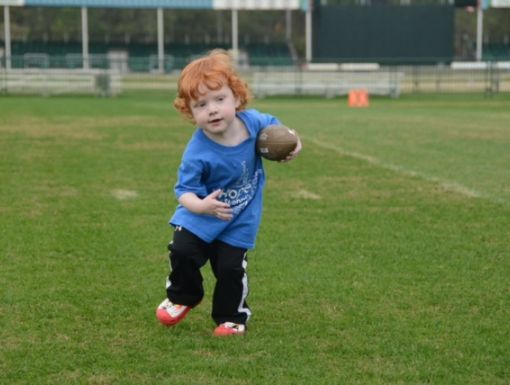
How to Tell if your Child’s Heart Rate is Healthy
Your child’s heartbeat is the most precious sound in the world - from hearing the whooshing noise at your ultrasound to feeling their small heart thump against you as you snuggle at bedtime. So how do you know your child’s heart rate is normal? And when should you be concerned?
First, it’s important to know that your child’s heartbeat will usually seem much faster than yours and that’s normal. An adult’s resting heart rate is usually between 50 to 100 beats per minute, whereas your child’s heart rate will be higher. Besides age, resting heart rate is affected by a number of different factors including hydration status, body size, weight, temperature, body position, etc. A normal resting heart rate for an infant can range from 90 to 160 beats per minute and this range shifts down with increasing age. Of course, there may be some outliers that can still be normal. With exertion, heart rate increases, and maximum heart rate is typically 220 beats per minute minus age during intense physical activity. So, for example, in a 10 year old, the maximum heart rate would be 220 minus 10 at 210 beats per minute at peak exertion.
Your child’s heart rate will seem faster when they are active or excited and will be slower when they are resting or fast asleep. It may also seem to race a little when they are ill or have a fever. At times, a child’s heart rate may seem irregular if you listen or feel. Most commonly, this is due to normal fluctuations in heart rate associated with breathing in and out and is a normal finding in children.
Now that you know what a normal heart rate is, how do you check your child?
There is usually no need to actively monitor your child’s pulse as your doctor will listen to your child’s heart at your regular visits, but if you are concerned, you can take their pulse by pressing your index finger and your middle finger on a major artery in the body and applying gentle pressure. Make sure you’re not trying to take pulse with your thumb as it has a pulse of its own and will throw off your reading. You will know you’ve found a pulse point when you feel a gentle throbbing. There are several places you can observe your child’s pulse:
- On the Wrist – Radial Pulse
Place your fingers on the base of your child’s thumb and move down the wrist. This works best if your child’s hand is lying flat.
- On the Armpit – Axillary Pulse
Place your fingers on the armpit and feel for the bones of your child’s arm. You should be able to feel the pulse here. This method works especially well for infants.
- On the Elbow Crease – Brachial Pulse
Place your child on their back with one arm lying flat. On the inside of their arm, place your fingers in the crease of their elbow and feel for the pulse here.
Once you’ve placed your fingers on the pulse point, count the number of beats in a 30-second time frame. Once the 30 seconds is up, take the number of beats you counted and double it. This way you have the number of beats in a 60 second window, also known as the beats per minute.
If you don’t feel comfortable taking your child’s pulse manually, there are many electric devices that can monitor your child’s heart rate, including some smart phone apps. However, these devices are not always accurate, especially in young children, so proceed with caution when using them.
If you feel that something is not right with your child’s heart rate or your child is complaining of palpitations, you should consult your doctor. Other warning signs of potential heart rhythm issues can be chest pain, fainting, trouble breathing and poor activity level. If you observe any of these signs it’s important that you communicate them with your pediatrician as soon as possible.


